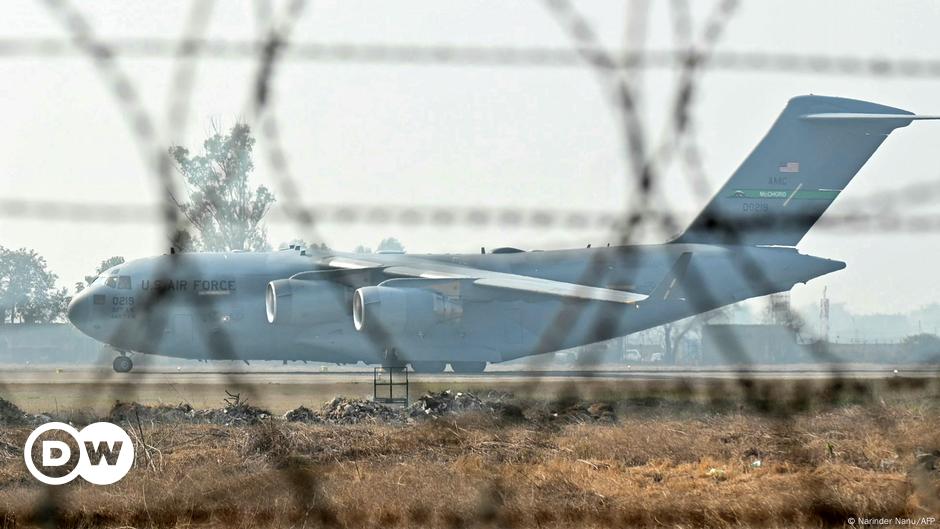Trump Administration Deports Undocumented Indians on Military Aircraft, Sparking Misinformation
In a significant escalation of immigration enforcement, the Trump administration deported 104 undocumented Indian migrants on a C-17 military aircraft on February 5, 2025. This marks the furthest destination yet for a deportation flight under the current administration and the first time a military plane has been utilized for such a purpose involving Indian nationals. The flight, which landed in Amritsar, Punjab, carried individuals from various Indian states who had illegally entered the United States over several years. The move underscores the administration’s hardline stance on illegal immigration, a key promise of Trump’s election campaign. The event has also triggered a wave of misinformation online, prompting fact-checking organizations to debunk various false claims.
One prominent example of misinformation involved images circulating on social media purporting to show the deported Indians handcuffed and shackled on the plane. Fact-checkers identified the images as originating from a previous, unrelated deportation flight to Guatemala. Another misleading post falsely claimed that a large group of Indians were being deported, accompanied by a photo of individuals being repatriated to India from Paris following suspicions of human trafficking. These instances highlight the rapid spread of false narratives surrounding the deportations and the need for accurate reporting.
Exaggerated figures regarding the number of deportations have also spread online. One viral post erroneously claimed that the US and Canada had agreed to deport 1.2 million Indian immigrants. In reality, while the US has identified nearly 18,000 undocumented Indian migrants for potential deportation, the actual number deported remains significantly lower. Over 1,100 Indians were repatriated between 2023 and 2024 during the Biden administration, preceding Trump’s current term. The estimated number of undocumented Indians living in the US, according to the Pew Research Center, is over 725,000, making them the third-largest undocumented group after Mexicans and Salvadorans.
Further misinformation involved a video circulated on social media alleging to depict Indian deportees in distress while boarding the plane, masked and shackled. Fact-checking revealed that this footage also originated from a previous deportation flight unrelated to the Indian nationals. The repeated misidentification of unrelated images and videos highlights the susceptibility of social media users to misinformation, especially during emotionally charged events like deportations.
While the Trump administration intensifies its deportation efforts, the Indian government has expressed a willingness to cooperate, likely motivated by a desire to avoid trade disputes and protect the interests of legal Indian immigrants and visa holders in the US. The Indian diaspora in the US is substantial, numbering nearly five million, with an additional five million holding nonimmigrant visas. India also benefits significantly from H-1B visas, receiving two-thirds of those issued annually.
This cooperation between the US and Indian governments was evident in a meeting between US Secretary of State Marco Rubio and Indian Foreign Minister S. Jaishankar shortly after Trump’s inauguration. Jaishankar affirmed India’s openness to accepting its citizens back if they are residing illegally in the US and their citizenship is verified. This collaborative approach signals a shared interest in managing migration flows while respecting legal processes. However, the recent deportations and the accompanying misinformation underscore the sensitivities surrounding this issue and the challenges posed by inaccurate information in the digital age. The continued focus on immigration enforcement promises further developments in this complex relationship between the two countries.


